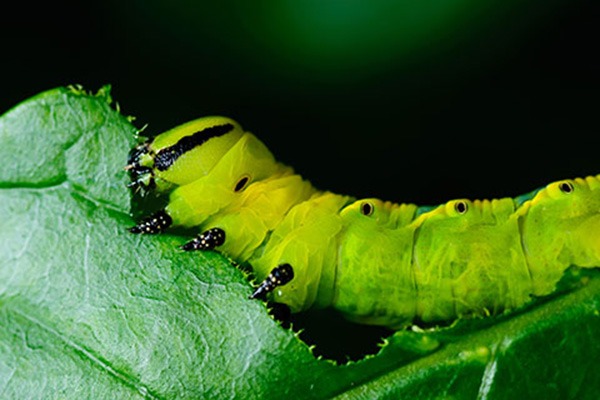Origin: a Latin derivative
meaning "Gift of the Earth."
Part 6: Phytochemistry—Diseases, Predators, and Threats

Disease-inducing organisms are a major threat to plants, inducing dozens of different varieties of disease. Fungal, bacterial, and viral infections wipe out about a third of domesticated crops annually, and plants in nature are no safer. Additionally, there is widespread plant destruction caused by herbivores and insects. Luckily, secondary metabolites provide plants with innate defense mechanisms to protect them against these destructive predators.
The word virus comes from the Latin root meaning “poison” and can cause severe physical and physiologic damage, even death, to plants. Viruses are very small, taking up less than half the space of even the tiniest cells. They have a very basic structure consisting of a core of only simple genetic material (either DNA or RNA) and an outer protein shell. Because the virus’ structure does not contain all of the components necessary to sustain life, they must invade the cells of living organisms. Entry through the cell’s thick wall is difficult, so viruses must monopolize on cracks or wounds in the cell wall or enter through pollen grains. Genetic material is then injected inside of the cell, where it is transcribed, translated, and replicated. The newly produced viruses can move to nearby cells through the plasmadesmata, a channel connecting adjacent plant cells. As this process continues, plant cells are damaged and disease ensues. Plants infected with viruses show many symptoms including slowed growth, discolored splotches, or damaged flowers, leaves, and roots.
Bacteria are another type of microbial organism with the potential of inflicting damaging effects on plants. Bacteria are small, single-celled organisms with simplified organelles and a cell wall. There are many mechanisms by which bacteria invade plant cells, often being carried by insects, animals, wind, or water. Humans can also cause bacterial infections if they use infected tools to work with the plants, improperly dispose of dead plant materials, or introduce infected plants into the same area as healthy plants. Like viruses, it is difficult for bacteria to enter plant cells, so they must exploit natural openings (such as a stomata), or wounds the cell in order creep inside, infect the cell, and eventually cause cell death. If suitable host cells are not available, some bacteria can assume a dormant state until a suitable host becomes available. Plant diseases caused by bacteria include soft rot , discoloration, wilting, tissue scabs or scarring, overgrowths, galls, and plant cancers.





